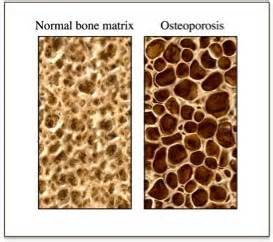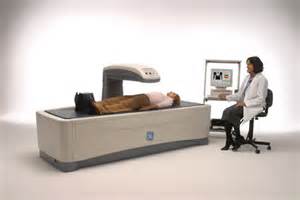By Tyler Russell
For many females and some males it is crucial to increase or at least maintain bone mineral density to help prevent osteoporosis and osteopenia. Osteoporosis is a disease characterized by a decrease in bone mass and density, occurring especially in postmenopausal women, resulting in a predisposition to fractures. Osteopenia is a generalized reduction in bone mass that is less severe than that resulting from osteoporosis. Osteopenia is caused by the resorption of bone at a rate that exceeds bone synthesis. Both of these conditions can be prevented if you start resistance training at a young age. Resistance training is a type of exercise that uses external resistance to cause muscle contractions with the intent to strengthen and tone, increase lean body tissue, and increase endurance. Many studies have shown that doing resistance training can also increase bone mineral density in both males and females. Now I know you are probably saying “weight training will make me look bulky, all muscular, and look like a man” this is simply just a myth because females do not produce the same hormones that males do. So your chances of looking all bulky and masculine are slim to none.
One way you can check your bone mineral density is through a DEXA scan. By reading the T-score from the DEXA scan you can tell what your bone density is. A DEXA scan is a method of chemical analysis in which a sample of a substance is exposed to electromagnetic radiation, and the amount of radiation absorbed by the sample is measured. This measurement is then used to determine the concentration or chemical composition of the substance. Absorptiometry is used in medicine to measure bone density. When reading your DEXA scan report you want to look for the T-score to determine your bone mineral density. Normal bone density is defined as a T-score of -1.0 or higher. Osteopenia is defined as between -1.0 and -2.5. Osteoporosis is defined as -2.5 or lower.
In recent studies, women who participated in a strength training program for a year saw significant increases in their bone density at the spine and hips, areas affected most by osteoporosis in older women. Maintaining strong muscles through weight training helps maintain your balance and coordination which is a critical element in preventing falls, which can lead to osteoporosis-related fractures. When you are going about starting a resistance training program it is crucial to seek a fitness professional who is very knowledgeable when it comes to resistance training and has a degree in a Kinesiology related field of study.
Here are the ACSM guidelines when starting a resistance training program.
1. Perform a minimum of 8 to 10 exercises that train the major muscle groups.
- Workouts should not be too long.
- Programs longer than one hour are associated with higher dropout rates.
- If possible choose more compound, or multi-joint exercises which involve more muscles with fewer exercises.
2. Perform one set of 8 to 12 repetitions to the point of volitional fatigue.
- More sets may elicit slightly greater strength gains but additional improvement is relatively small. Consider additional warm-up set described below.
3. Perform exercises at least 2 days per week
- More frequent training may elicit slightly greater strength gains but additional improvement is relatively small. Progress is made during the recuperation between workouts.
4. Adhere as closely to the specific exercise techniques.
5. Perform exercises through a full range of motion
- Elderly trainees should perform the exercises in the maximum range of motion that does not elicit pain or discomfort
6. Perform exercises in a controlled manner.
7. Maintain a normal breathing pattern.
8. If possible, exercise with a training partner

